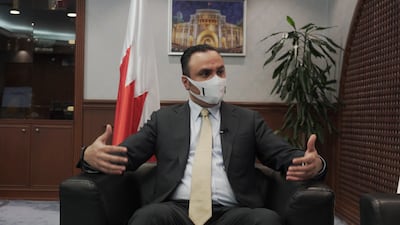Bahrain is preparing for a tourism boom as a “game-changing” project, island developments and five-star properties promise to transform its leisure landscape.
As the country begins to ease travel restrictions and tourists return, officials hope 2022 will be the landmark year in which it claims a firm footing in the competitive Gulf holiday market.
It will look to not only lure visitors with glitzy hotels and idyllic beachfront living but with its deep-rooted culture and heritage.
director general of culture and arts at Bahrain National Museum
“It was important Bahrain was ready in a new transformative way to push a new tourism agenda in the market,” said Dr Nasser Al Qaedi, chief executive of Bahrain Tourism & Exhibitions Authority.
“In a global environment where tourism has changed, we are focused on 2022 being a year where we can transform the landscape of what is on offer here.
“Hopefully, by the end of the year we will have inaugurated the new Bahrain Exhibition Centre, one of the largest such facilities in the Middle East. It will be a game changer for Bahrain and the Gulf by supporting more events, festivals and conferences.”

Seven new-five star properties this year, and beachfront developments in Bahrain Bay are in the pipeline to provide waterfront corniche activities.
Bus tours and water taxis will be provided. Five new cities situated on newly constructed islands are among other coming projects, and will increase Bahrain’s total land area by more than 60 per cent.
Fasht Al Jarim, the largest of those planned, will span 183 square kilometres and be a base for housing, tourism and logistics.
Bahrain is pressing ahead with a new metro system of about 110 kilometres. It will connect all major population hubs in the country, with a 20-station first phase of the metro connecting Bahrain International Airport to the residential and commercial area of Seef, linking both to Manama and the Diplomatic Area.
“We want to populate different parts of the country with things to do, and we are working with Gulf Air to get more people here with incentivised packages with travel deals,” Dr Al Qaedi said.
“This transformation has already started with our new airport. It is a taste of the new infrastructure to come.
“We want to create a unique identity and experience, and we will work with our counterparts in the region to promote the Gulf.
“Anyone coming here every few months will see something new. We are a unique island destination in the Middle East and that is our appeal.
“Our size is our advantage. Everything is within close proximity.”
Three Unesco heritage sites to explore
Culture and heritage is the secret weapon Bahrain hopes can draw in a new breed of visitors to the region.
The country is home to three Unesco World Heritage sites – the Dilmun Burial Mounds, Pearling Path – Testimony of an Island Economy and Qal’at Al Bahrain, an ancient harbour, fort and capital of Dilmun.
“We are very proud of this story that is connecting the history and legacy of pearl diving in Bahrain, that was the backbone of society,” said Hala Al Khalifa, director general of culture and arts at the Bahrain National Museum.
“I am very proud of the heritage sites we have in Bahrain.
“Most of our events at the museum are taking place as long as people take precautions and have the Green Shield pass.”
A pathway illuminated by series of street lights through the former ancient capital of Muharraq island takes visitors on a journey through Bahrain’s pearling past.
The 3.5km journey starts at the coast, from where trading ships and pearling vessels would dock, before travelling past the homes of those who worked in the area.
Those 17 buildings have been restored and sit alongside a visitors centre, library and coffee shop.
“The full Pearl Path project will end of this year, and allow people to discover the heritage of our special connection with the sea through these homes.
“Bahrain was a land of so many ancient civilisations and the burial mounds tell us that.
“The mechanism people used to bury their dead can be seen in the Dilmun burial mounds, which cover a huge area of Bahrain.
“These 12,000 domes are preserved and inscribed, and the idea of having so many of them was told because Dilmun was the land of eternal youth.
“People would be sent there to be buried, often with their prized possessions, jewellery and pots.
“The bigger mounds were for more prominent people, while earlier mounds were shaped like honeycombs.
“What we have found has told us a rich story of Bahrain’s past.”




















